High School Roller Coaster Modeling Project
-
Hello,
I'm a bit unsure where would be the best forum to post this . . . ?
Anyway, I'm going to give my high school students a project:
- research roller coasters (done)
- design roller coaster using SketchUp (what else)
- build a model using fan fold foam*, popsicle sticks & hot glue
- create SU model of the actual coaster built
- report of what was anticipated, accomplished, learned
I have quickly put together some basic guidelines - surely these rules need to be altered. I wanted them to work in groups of 3. I was thinking of the following time restrictions (because some students would take six months to do this if allowed):
3 hours for creating the preliminary CAD model
4 1/2 hours to build the roller coaster
2 hoursto create the CAD model of what was built
1 hour to evaluate the models and follow up with what's been learned%(#004080)[The Rules:
1 - Each group may select from one of three different roller coaster designs:
_Looping coaster --> Maximum points = 200/200
_Jumping coaster --> Maximum points = 190/200
_Distance coaster --> Maximum points = 180/2002 - Only the car provided by the instructor may be used with this project
3 - Any coaster which is not complete by the time period will receive a percentage grade for construction and CAD modeling - performance grade will equal zero
4 - Each roller coaster must have a 2" x 3" horizontal platform at the top
5 - Each roller coaster must be free standing - two textbooks are allowed
in construction but cannot be glued or damaged in any way6 - total materials: 20 popsicle sticks, two sheets of ~24" x ~48" 0.22
pink foam insulation, "reasonable" amount of glue sticks7 - Project is worth from 180 to 200 points:
7.1 - CAD model of proposed roller coaster = 40 points 7.2 - Construction of roller coaster = 50 points Coaster is within dimension guidelines? 20 points Coaster is freestanding? 20 points Construction is neat? 10 points *** Note: excessive violations of these criteria will result in zero points earned, for example, if the roller coaster was only 20 inches tall the construction points would equal zero. 7.3 - CAD Model of constructed roller coaster = 60 points Accurately includes all parts of coaster? 30 points Dimensions are correct? 30 points 7.4 - Roller coaster performance = 30 to 50 points _Looping coaster - maximum = 50 performance points ___Did car remain on the coaster? 20 points ___Did the car make the loop successfully? 30 points _Jumping coaster - maximum = 40 performance points ___Did the car clear the gap and remain on the coaster? --> 40 points _Distance coaster - maximum = 30 performance points ___Distance car coasted from end of coaster = 60" --> 30 points ___Distance car coasted from end of coaster = 48" --> 20 points ___Distance car coasted from end of coaster = 36" --> 10 points]The illustrations are simply to convey concept and illustrate dimension constraints - I don't want to give them too many ideas.
Any suggestions for making this a successful project will be most appreciated!


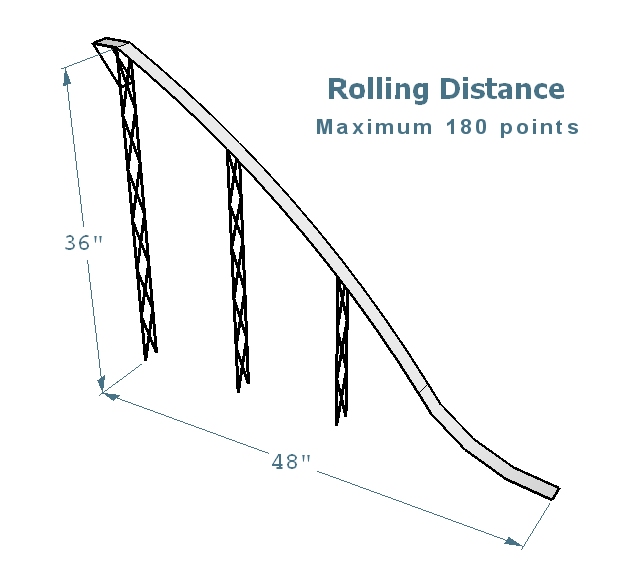
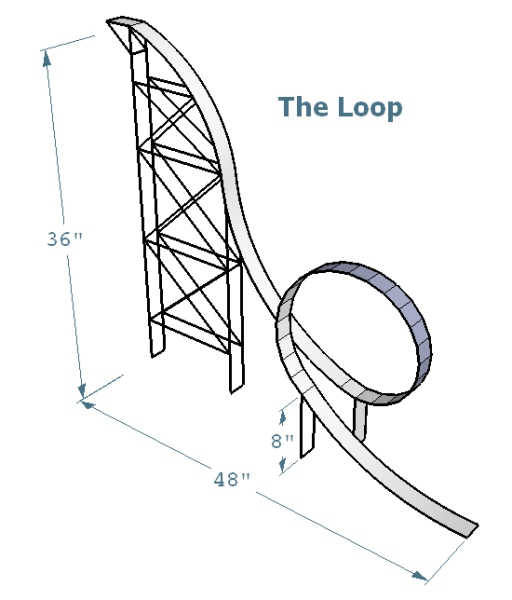
-
Have some fun...Make the jump through the loop...

-
Brad, don't give me this, please. I've been through a loop already but I cannot imagine I'd sit on anything that "jumps". That's crazy! Do you, dudes, have that in reality (really)???


-
@unknownuser said:
Do you, dudes, have that in reality (really)???
No, like the Hot Wheels cars on a flexible plastic track - the Hot Wheels cars are pretty small, about 2 inches long? -
How about a little SketchyPhysics added to the schedule? That would be cool!!!
-
Absolutely! SketchyPhysics will be part of it - I just have to figure out a little more about it. We already began learning about speed - the first of ten lessons which deal with roller coaster physics (attached below - my subscripts and delta symbols aren't displayed here, sorry). This may seem over-simple and ridiculous to be covering such a basic topic in high school, but many are surprised (including myself) how little these folks know about basic math, physics, et cetera:
%(#000080)[Understanding the Physics of Roller Coasters
speed = distance / time
if you travel distance s in a time t, your speed v is
v = s / t
The variable v really stands for velocity
True velocity has a direction associated with it (which speed does not) therefore velocity is a vector. Vectors have both a magnitude and a direction, so with velocity you not only know how fast you’re going, but also in what direction.
Speed is only a magnitude, so it’s represented with a v (not in bold).
v = x / t = (xf – xo) / (tf – to)
= change
xf = final position
xo = origin or starting point
tf = final time
tO = start timev = average speed (supposed to be a hyphen over the "v" - write that in before printing or find the symbol)]
-
. . . btw, does anyone know of a Ruby script that easily & reliably creates helical curves . . . ? . . .
Thanks,
Brad
-
There are two "drawhelix.rb"s here.
I think I use the later version. -
@unknownuser said:
There are two "drawhelix.rb"s here.
MEGA-THANKS!!! Works great - I updated the loop drawing above. -
. . . more options . . . food to inspire them rather than feed . . .
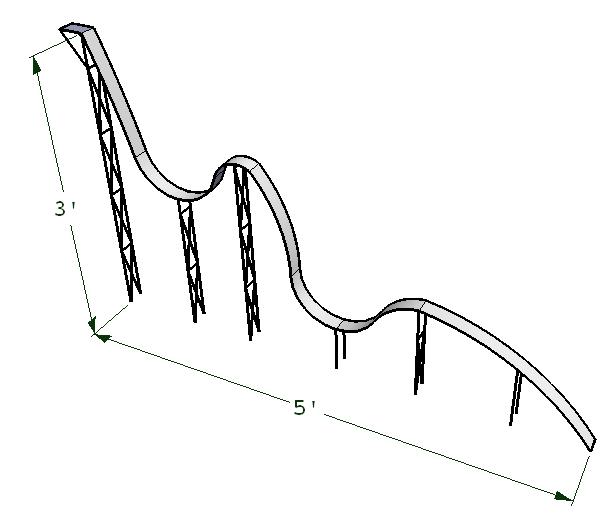
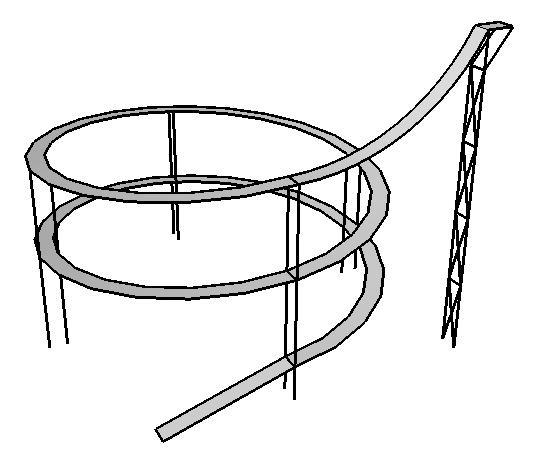
-
Now Brad with this latter, helical ramp the problem will be that the cars wil fly off. The path should be slanted inwards a bit I guess.

Nice ones though!
-
Yes - a good learning experience if they fall off - then the question & learning takes place: What was anticipated, how did it perform, what could have been done better?
-
The roller coaster project is officially "over" - it was a gigantic success!
Sorry this photo is very poor quality but it gives you an idea what some of the students did. This photo does not show all the roller coasters. Only four groups attempted the Round & Round - it was the most difficult, I think.
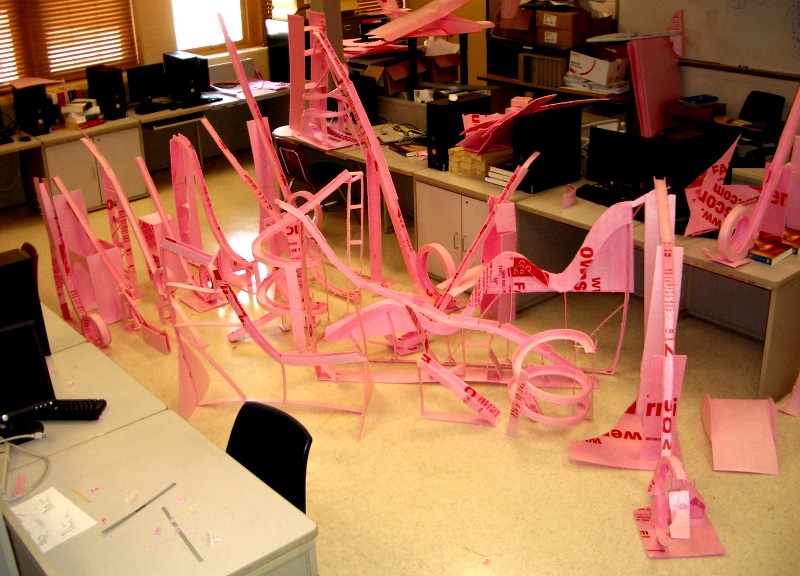
Advertisement







